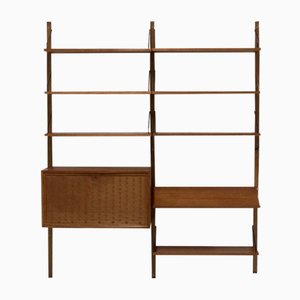Get to know super chic aptm
Berlin’s Newest Design Destination
Reinvention is an integral part of Berlin’s cultural identity. Driven by a pervasive and creative open-mindedness, combined with—at least for now—ample, relatively affordable real estate, Berliners have a unique aptitude for remaking spaces to fit new circumstances. The city boasts, for example, not one but two different World War II-era bunkers that have been transformed to host world-class art collections. The old airport, Tempelhof, has become an expansive, family-friendly park. Spree Studios, a new riverfront artist enclave and summertime party destination, is set in a location which, in past lives, hosted a massive public bath in the ’30s and ’40s, the GDR’s customs department during the midcentury, and, until just a few years ago, a deserted wilderness. And that’s not even touching the city’s iconic club scene; suffice it to say, that’s an arena where resourcefulness and imagination take on a whole new level.
Launched just a few weeks ago, aptm—short for “a place to meet”—is the latest manifestation of Berlin’s abiding spirit of reinvention. Situated in a 1905 brick building in Wedding that once housed horse-drawn postal wagons and, more recently, artist studios, aptm is a multidisciplinary, multipurpose space beautifully furnished like a private home—a fabulously stylish private home that is. It’s targeted toward commercial clients from the fashion, art, publishing, and food sectors for photo shoots, corporate parties, fashion shows, trunk shows, private dinners, and beyond. Though a few such spaces in Berlin already exist, aptm has definitively raised the “chicness” bar by replacing the safe, tried and tested, all-white and minimalist Berlin aesthetic with an evolving, eclectic, richly decorative atmosphere unlike any other. It’s a pop of much-needed color in a landscape largely dominated by neutrals. And, uniquely, if you like what you see, each drool-worthy object at aptm—from the handmade carpets on the floor to the lights in the ceiling and everything in between—is available for sale. As founder Chris Glass explains, it’s “a personal space for intimate gatherings, a living design gallery, an ever changing retail experience, and a product showplace.”
Glass, a globetrotting American expat who has made Berlin his base since 2009, has been dreaming of aptm for years. He wanted to create a space unlike any other in Berlin—or anywhere else in the world, for that matter. Above all, though, he wanted to provide an inspiring backdrop to bring people together. “The space is about trying things that most people wouldn’t dare to,” he says. “Living bigger. Better.”
aptm’s debut installation aptly follows the theme of “Birth,” and the space is awash in lively pinks and warm woods, a blend of cutting edge contemporary objects alongside both classic and off-the-beaten-path vintage pieces and over the top greenery. Everywhere you look, there are little treasures, from an antique, 1910 bentwood Thonet daybed to a rose-hued Moroccan rug Glass found at a market in Marrakech. Other delights include a seductive, late 1950s Italian entryway wardrobe by Rinaldo Scaioli and Eugenia Alberti Reggio for La Permanente; metallic wall tiles by Lisbon’s Mambo Unlimited Ideas that feel, fabulously, more like abstract art than functional décor; dreamy mirrors by Berlin-based designers Elisa Strozyk and Joa Herrenknecht; and a breathtaking, sculpted wood chaise lounge by contemporary Italian designer Stefano Marolla for Secondome. It’s a feast for the eyes, punctuated by countless, small gems the aptm team has gathered on its world travels. As they put it: “Imagine: a friend well traveled and with superb taste gives you the keys to their well appointed place and says make yourself at home!”
The installations will change thematically throughout the year, and everything inside, from floor to ceiling, will be refreshed each time. Open just a few weeks now, aptm has already hosted private dinners, photo shoots, corporate parties, fashion shows, and trunk shows. To launch the space, Glass curated objects from a slew of high-end brands, including Bocci, Casper, Gestalten, Ichendorf Milano, Jean Roger Paris, Mary Lennox, Norr11, Loewe, Luxor Style, and Rosenthal, among others. And Pamono provided much of the vintage and contemporary furniture, lighting, and accessories, in addition to developing a new series of events at aptm dedicated to supporting the Berlin (and beyond) design community.
We sat down with Glass one recent morning to discuss what’s at the heart of the aptm project, his motivations and inspirations, and his hopes for the future.
Anna Carnick: How was the aptm project born?
Chris Glass: I’ve always had a strong desire to bring people together, and, as much as possible, in an intimate environment. My mother was a wonderful host and involved my siblings and me from a very young age in entertaining at home. The seconds before the doorbell rang and the first guest arrived were the biggest rush I could imagine as a kid. So entertaining has been in my system as long as I can remember.
This incarnation—which involves layers of design, retail, art, food, etc. crystallized in the last few years. I travel a lot for work and I kept discovering things that I wanted to be able to share with other people—everything from food to objects to other people. And I wanted it to be personal. I wanted it to be something that reflected my sensibility and perspective. And I wanted it to be evolving and ever-changing, yet to always remain within the same four walls. Almost like a living gallery.
AC: What makes this space unique?
CG: This is the only concept of its type that I know of—a hybrid, flex concept that includes an event space, a retail environment, and a gallery space.
But more than anything, it is personal. It is a reflection of me as a person, what inspires me, where I travel, what I find amusing. From the moment you walk in the door, you feel the presence of a person and a personality in the space. You smell it, you see it, you hear it, and eventually you taste it. And because it changes periodically, it’s full of surprises.
AC: How long has aptm been a dream of yours?
CG: I lived in NYC in the late 90s, when the notion of the concept store emerged. I was so drawn to the idea that a space could be cross-disciplinary, a canvas of sorts. As I traveled and lived in different places, I always went in search of that type of space, and as they became more rare, the dream to create my own space grew.
AC: What do you hope those who visit this space will take away from it? Are there any particular sentiments you’re hoping to evoke?
CG: Fantasy, inspiration, joy, possibility, experience, connection. The space is about trying things that most people wouldn’t dare to. Living bigger. Better.
AC: Tell us a little bit about the opening events you have planned for the coming year.
CG: I want people to experience aptm in the context that they would naturally—for dinners, talks, exhibitions, tastings, photo shoots, etc. So those are the types of events we’ve planned thus far. All of the events have been curated around various aspects of the Birth theme— including our Fireside Chat, the talk we did with Pamono about collaboration in design.
AC: Please tell us about the inspiration behind the debut installation, organized under the theme “Birth.”
CG: Birth is a celebration of creation and creativity. And as it is our first installation, it’s timely. It is about things coming together and the joy that comes out of that. It harkens the arrival of spring, when so many things in nature and society come alive. It is a celebration of the feminine, the masculine, and the undefined. And it is something that has evolved as it’s emerged. I was initially inspired by the color pink. And from that, a series of objects came to light that I wanted to feature, a series of people, a series of gestures that I wanted to bring into the space. The process has been very much like what I imagine birth to feel like—the pain, the anticipation, the hormonal and emotional roller coaster, the uncertainty, the unbridled joy, the passion, the hair pulling, the name calling, the release, [and finally], watching a baby take its first steps.
AC: You’re collaborating with a number of high-end brands. Is there a connective thread that links them together in your mind?
CG: There are brands that I have long been a fan of and others that I have discovered in the process. The connective tissue is the commitment that everyone has made to be a part of something new, something different.
AC: What’s the most important aspect of this project for you?
CG: The moments when I watch people stare at a shelf and get lost in the stories told there is what delights me. I can see the twinkle in their eye as the layers unfold and the whispered gestures unravel. It’s a confirmation. I think much like an artist allows the viewer to interpret their work and delights in seeing them discover the intended and the unseen, I like to observe the observer. And more than that, I enjoy the space. I enjoy what I have created and that is a full circle moment for me—owning my own creativity and process.
AC: How will you define success relating to the aptm project?
CG: There’s of course a financial factor—I need to keep the lights on and the rent paid. But if we can manage to expose some unseen talent and allow people to experience things that were until now unfamiliar, that would be a sign of success.
AC: Tell us a bit about the location. What should those less familiar with Wedding know about the neighborhood? And, further, as a globetrotter, you could have theoretically launched this project in a variety of places. Why start in Berlin specifically? Do you see any resonance between the city’s spirit and the aptm concept?
CG: Wedding sits in the northwest sector of Berlin— just between Mitte and the airport Tegel. It’s central without being in the middle of everything.
I think it’s perhaps the last bastion of authenticity in Berlin. There’s something very unpretentious and unrelenting about it. It has heart. It’s the kid in the corner of the class that you never expected to become anything, who eventually becomes a world leader. It’s kind of epic.
I wanted something unexpected and unassuming. Part of the magic of aptm is arriving in this industrial courtyard, climbing the stairs, and then being transported to another place once the door opens.
Berlin is one of the few cities left in the world that allows people to experiment and explore. It’s still affordable. And that curious spirit makes it a destination for people from all over the world.
AC: Where do you hope to see aptm three or five or ten years from now?
CG: I would love to see aptm become a curated platform—both as a destination and in terms of content.
-
Text by
-
Anna Carnick
Anna is Pamono’s Managing Editor. Her writing has appeared in several arts and culture publications, and she's edited over 20 books. Anna loves celebrating great artists, and seriously enjoys a good picnic.
-
-
Photos by
-
Marco Lehmbeck
Born and raised between forests and lakes near Berlin, Marco studied creative writing in Hildesheim and photography in Berlin. He’s also part of the organizational team behind Immergut indie music festival. He loves backpacking, Club-Mate, and avocados, and he always wears a hat.
-
-
French Translation by
-
Alexis Braine
Born in Paris, Alexis is one of our wonderful French translators. He studied applied foreign languages as well as translation, focusing on economics and legal language. He moved to Berlin in 2014, and has since worked as a translator for different design companies, both in-house and as a freelancer. Alexis is inspired by vintage design from the 1960s to the early 1980s, and he loves jazz.
-
-
Italian Translation by
-
Valeria Osti Guerrazzi
Born and bred in Rome, Valeria could never hide her (irrational) love for cold but colorful Berlin, where she moved immediately after earning a BA in literature from Rome's La Sapienza (her thesis was on Dostoevsky). She is a translator for Pamono, and, in her free time, she likes to get lost in books and nature with her dog Pepper, the cutest dog in town.
-
-
German Translation by
-
Annika Hüttmann
Born in the northern city of Kiel, Annika's mixed German-Swedish roots mean that she grew up exposed to a smorgasbord of Scandinavian design. The Pamono translator’s latest passion, however, is for German vases produced between the 1950s-70s, of which she now has a collection of over 70!
-
More to Love
Vintage Sputnik Spherical Glass Table Lamps from Doria, Set of 2

Big Oval Antique ORA Table Mirror by Joa Herrenknecht
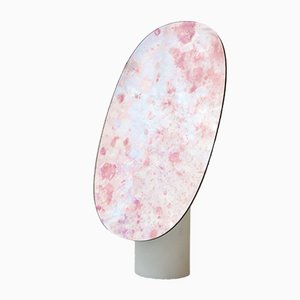
Fading Wooden Textiles by Elisa Strozyk
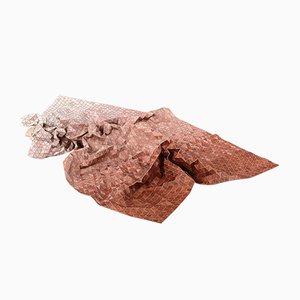
Small Round Silver ORA Table Mirror by Joa Herrenknecht
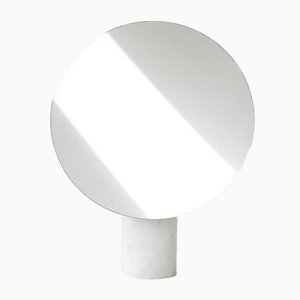
Vintage Gold-Leaf Flower Wall Lamp

Dyed Wooden Textile No 1 by Elisa Strozyk
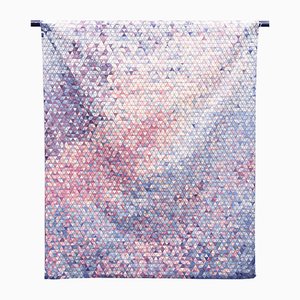
Vintage Plant-Shaped Floor Lamp

Mid-Century Royal System Teak Wall Unit by Poul Cadovius for Cado
